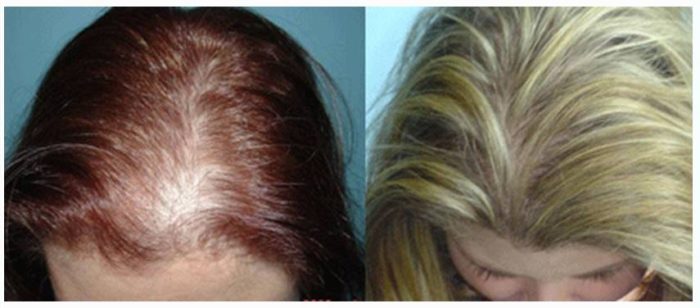Female Hair Restoration
Unlike male hair loss, women can experience a wider range of hair loss types and multiple causes. Typically, genetic female hair loss begins after menopause and presents as an overall thinning or a veil-like effect. Women can also experience pattern hair loss, similar to men, characterized by raised or receded hairlines. Both of these types are typically genetic and can be treated with either hair restoration surgery or medical therapy.
Our founder Dr. Daniel McGrath, has dedicated his practice to the treatment of hair loss, and as the past-president of the Board of Directors of the American Board of Hair Restoration Surgery, he has helped develop the educational and testing programs to ensure that physicians are well-versed in both cause and treatment of hair loss for both men and women.
Over the years, Dr. McGrath has been a pioneer in research and deployment of medical therapies, including ACell + PRP hair loss therapy, Exosome Therapy and Laser Light Therapy for hair loss.
When a female patient consults with our practice, our initial approach to treatment is either cosmetic, utilizing hair loss camouflage products, or medical therapy options. Only if a female demonstrates an obvious genetic pattern loss or physical scarring will we consider hair transplant surgery as the first option.
Recent medical therapies including topical duasteride, Acell + PRP and Exosome therapy have provided female patients with more effective options besides topical minoxidil for treating their hair loss.

Non-Pattern Causes of Hair loss in Women
Some of the most common of these causes are:
Trichotillomania – compulsive hair pulling. Hair loss due to trichotillomania is typically patchy, as compulsive hair pullers tend to concentrate the pulling in selected areas. Hair loss due to this cause cannot be treated effectively until the psychological or emotional reasons for trichotillomania are effectively addressed.
Alopecia areata – a possibly autoimmune disorder that causes patchy hair loss that can range from diffuse thinning to extensive areas of baldness with “islands” of retained hair. Medical examination is necessary to establish a diagnosis.
Triangular alopecia – loss of hair in the temporal areas that sometimes begins in childhood. Hair loss may be complete, or a few fine, thin-diameter hairs may remain. The cause of triangular alopecia is not known, but the condition can be treated medically or surgically.
Scarring alopecia – hair loss due to scarring of the scalp area. Scarring alopecia typically involves the top of the scalp and occurs predominantly in women. The condition frequently occurs in African-American women and is believed to be associated with persistent tight braiding or “corn-rowing” of scalp hair. A form of scarring alopecia also may occur in post-menopausal women, associated with inflammation of hair follicles and subsequent scarring.
Telogen effluvium – a common type of hair loss caused when a large percentage of scalp hairs are shifted into “shedding” phase. The causes of telogen effluvium may be hormonal, nutritional, drug-associated, or stress-associated.
Loose-anagen syndrome – a condition occurring primarily in fair-haired persons in which scalp hair sits loosely in hair follicles and is easily extracted by combing or pulling. The condition may appear in childhood, and may improve as the person ages.
Diagnosis and Treatment
If you are a woman with thinning or lost scalp hair, your first necessary step is to have the condition correctly diagnosed by a physician hair restoration specialist. After a diagnosis is made, Dr. McGrath will recommend an approach to effective medical or surgical treatment

